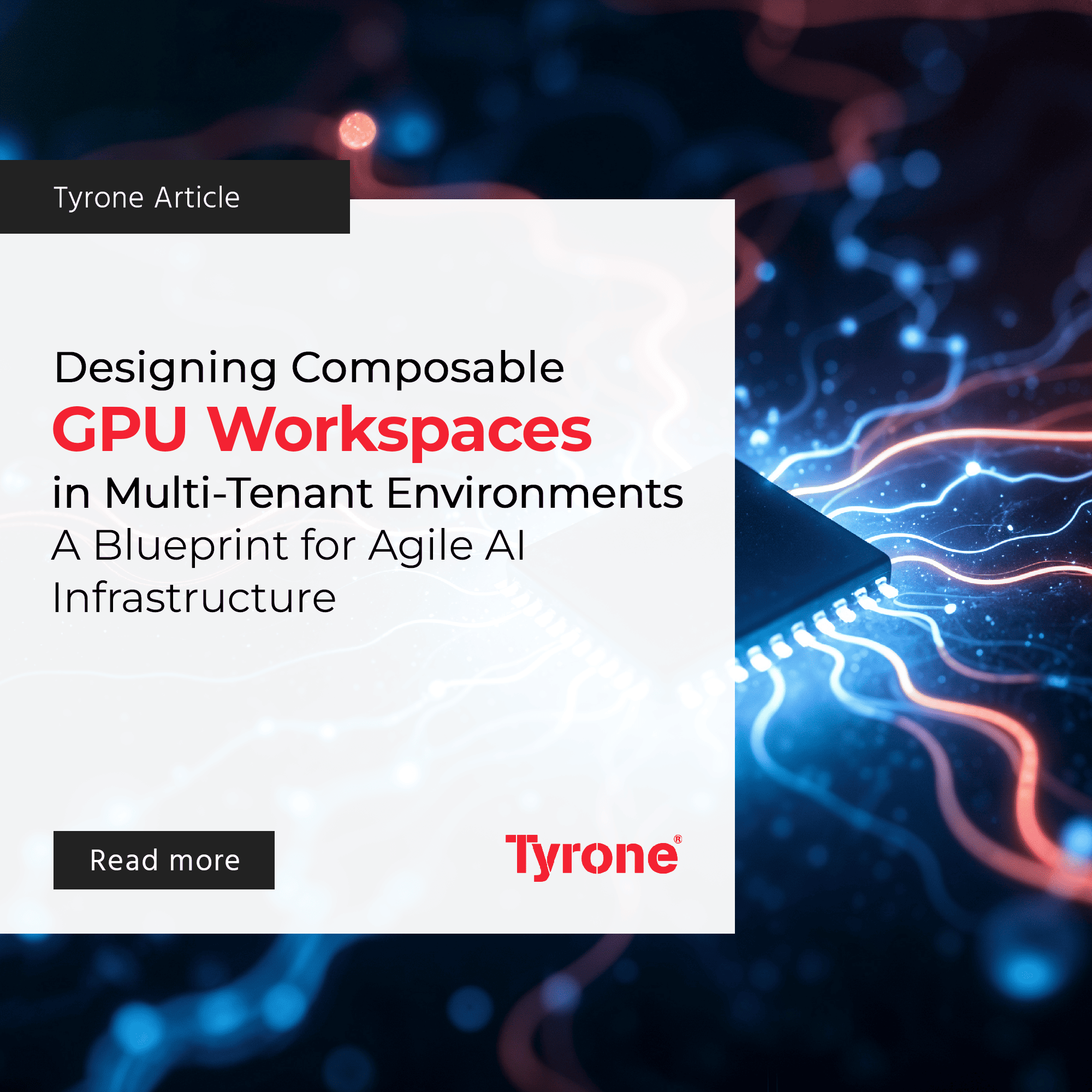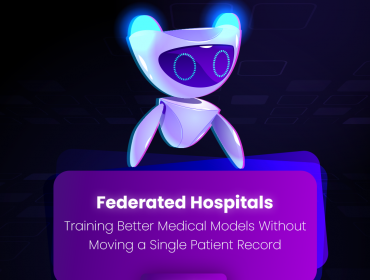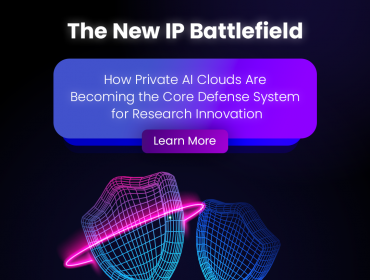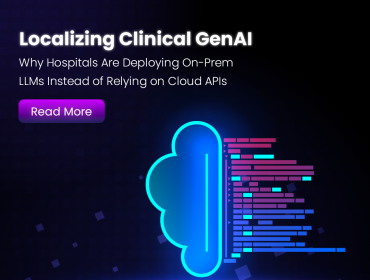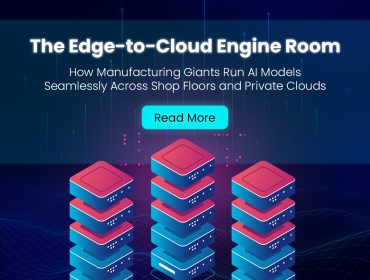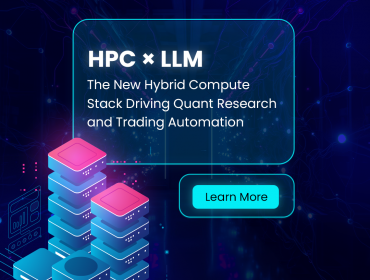In this hypercompetitive digital landscape, enterprises must rapidly adapt to ever‐evolving AI workloads. As organizations increasingly rely on AI for critical business functions, the need for agile, scalable, and cost‐efficient infrastructure has never been more urgent. Composable GPU workspaces, particularly in multi-tenant environments, represent a transformative blueprint for building an AI infrastructure that can meet these challenges head-on.
The Case for Composable GPU Workspaces
Traditional data centers, with their rigid hardware allocations and siloed resources, struggle to keep pace with the explosive growth in AI demands. Composable GPU workspaces decouple compute, storage, and networking resources, enabling organizations to dynamically pool and reallocate GPU power as workloads shift. This not only improves efficiency but also significantly reduces capital and operational expenditures.
Although the recent uptick in investment is promising, most organizations are still falling short in fully realizing the benefits of AI. Executives dissatisfied with their organizations’ progress on AI and GenAI have highlighted several challenges: a shortage of talent and skills (62%), unclear investment priorities (47%), and the absence of a strategy for responsible AI (42%) (Source: BCG). In this environment, adopting a composable, flexible infrastructure becomes a critical competitive advantage. Moreover, as AI models continue to grow larger and more complex, the ability to fine-tune resource allocation—providing exactly what each workload requires—ensures that valuable compute cycles are not wasted.

Core Design Principles for Multi-Tenant GPU Infrastructure
Designing an agile AI infrastructure begins with embracing several core principles:
1. Modularity and Disaggregation
Breaking down traditional server architectures into discrete, independently managed components is at the heart of composable infrastructure. By disaggregating GPU resources from fixed physical configurations, organizations can form fluid resource pools that can be recombined on demand. This modular approach enables businesses to scale resources horizontally with minimal disruption.
2. Dynamic Resource Allocation
The cornerstone of composable GPU workspaces is the ability to reallocate GPU resources dynamically. Through an API-driven software control plane—often integrated with orchestration platforms like Kubernetes—administrators can instantly provision, reassign, or release GPU resources based on current workload demands. This dynamic allocation helps to maintain high GPU utilization rates, ensuring that enterprise investments are used to their fullest potential.
3. Secure Multi-Tenancy and Isolation
In a multi-tenant environment, maintaining strict isolation between workloads is paramount. Techniques such as containerization, microVMs, and the use of Data Processing Units (DPUs) help enforce a zero-trust security model. By ensuring that each tenant’s data and workloads remain segregated, organizations can confidently share infrastructure while meeting stringent regulatory and data privacy requirements.
Architecting a Composable GPU Workspace: A Step-by-Step Blueprint
Assessment and Resource Pooling
Begin by evaluating your existing infrastructure to identify underutilized GPU assets and potential integration points. Disaggregate these resources and pool them into a unified resource repository. This initial phase sets the stage for dynamic orchestration and allows for future expansion without significant hardware overhauls.
Orchestration via Software-Defined Control
Implement a software-defined control plane that leverages modern orchestration tools such as Kubernetes. This control plane should provide APIs for real-time monitoring, scheduling, and provisioning of GPU resources. The objective is to enable dynamic resource orchestration where workloads automatically trigger the reallocation of GPU power based on predictive analytics and real-time demand.
Ensuring Security and Tenant Isolation
Design your infrastructure with robust security protocols to enforce strict multi-tenancy. Employ advanced containerization techniques and microVM technologies that offer near-native performance while ensuring each tenant’s environment remains isolated. Integrate role-based access controls (RBAC) and network segmentation to further safeguard sensitive AI workloads.
Automation and Scalability
Leverage automation to reduce operational overhead. Automating routine tasks—such as tenant onboarding, resource scaling, and system monitoring—not only enhances efficiency but also minimizes human error. Scalable automation ensures that as your AI demands grow, your infrastructure adapts seamlessly without requiring disruptive hardware upgrades.
Financial and Strategic Benefits for Stakeholders
For stakeholders, the strategic advantages of investing in composable GPU workspaces are compelling:
- Cost Efficiency: By dynamically allocating resources, organizations avoid the pitfalls of overprovisioning and underutilization, translating to significant cost savings on both capital expenditures (CAPEX) and operational expenditures (OPEX).
- Operational Agility: Faster deployment and seamless scaling lead to reduced time-to-market for new AI-driven products and services. This agility ensures that businesses remain responsive to market trends and evolving customer needs.
- Enhanced ROI: Optimized resource utilization directly correlates with improved return on investment. As enterprises harness composable infrastructures to power their AI models, they can expect substantial performance gains that translate into increased productivity and revenue.
- Future-Proofing IT: With the rapid evolution of AI technologies, infrastructure that can adapt on the fly becomes a critical asset. By investing in composable GPU workspaces, companies are not just meeting current demands—they are building a foundation that can accommodate future AI innovations and workloads.

Conclusion
Designing composable GPU workspaces in multi-tenant environments is not just an operational improvement—it’s a strategic imperative for enterprises aiming to lead in the age of AI. By embracing a modular, dynamically orchestrated, and securely isolated infrastructure, organizations can achieve unprecedented levels of efficiency and agility. For stakeholders, this blueprint translates into reduced costs, faster innovation cycles, and a robust platform to support the next generation of AI applications.
Investing in composable GPU workspaces today is an investment in tomorrow’s competitive advantage. With proven benefits ranging from enhanced resource utilization to significant cost savings, this agile infrastructure model is set to drive the future of AI, positioning forward-thinking organizations at the forefront of the technological revolution.


